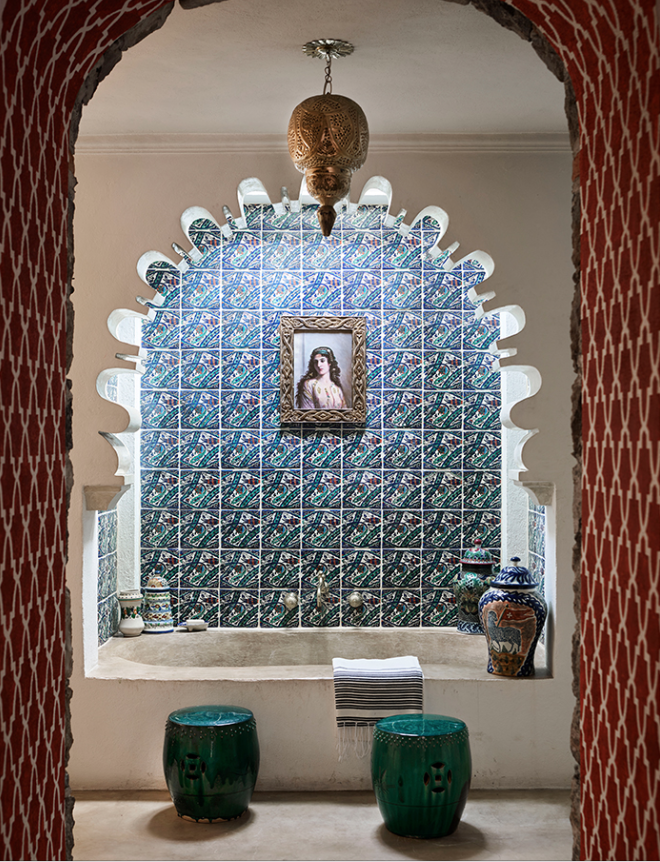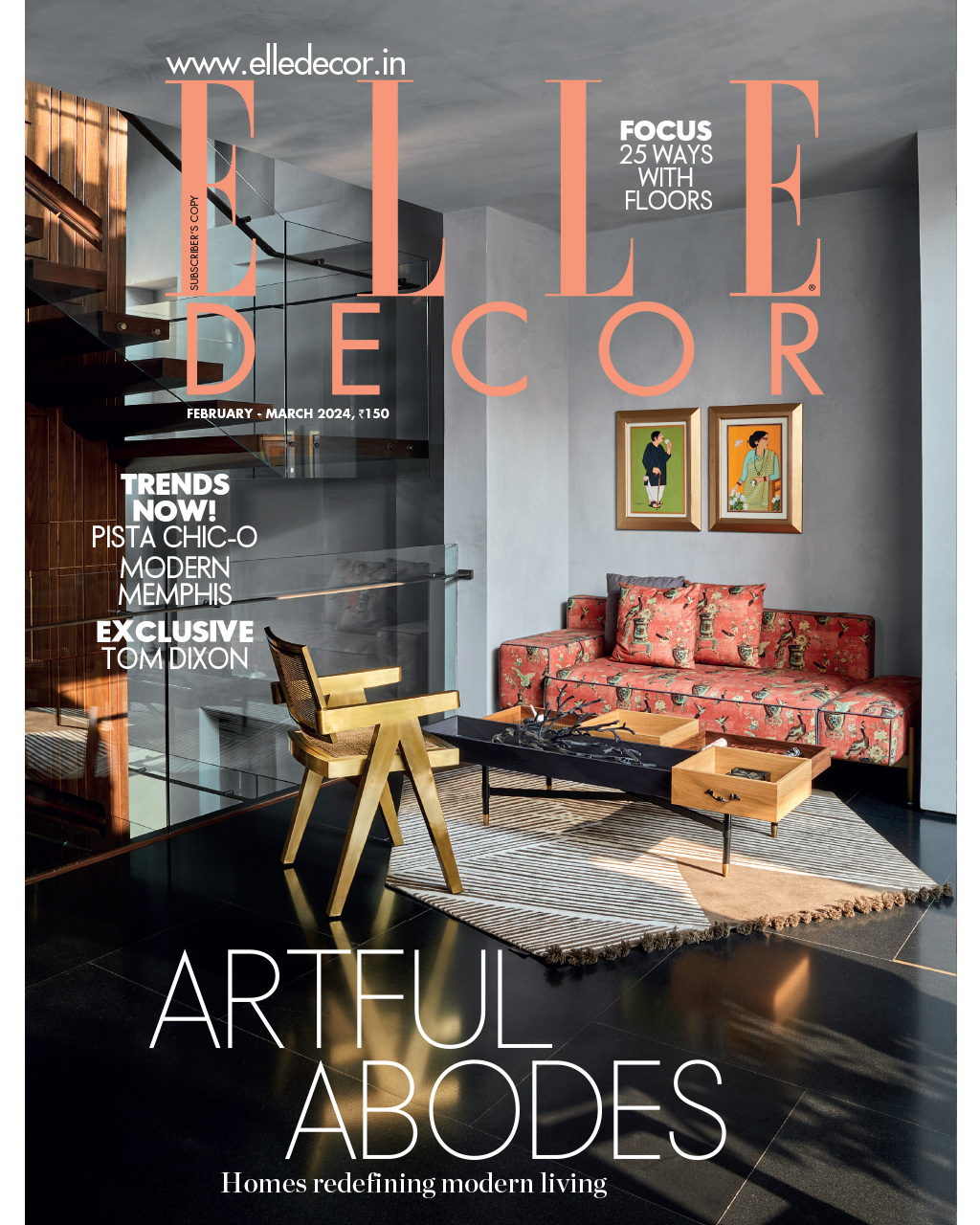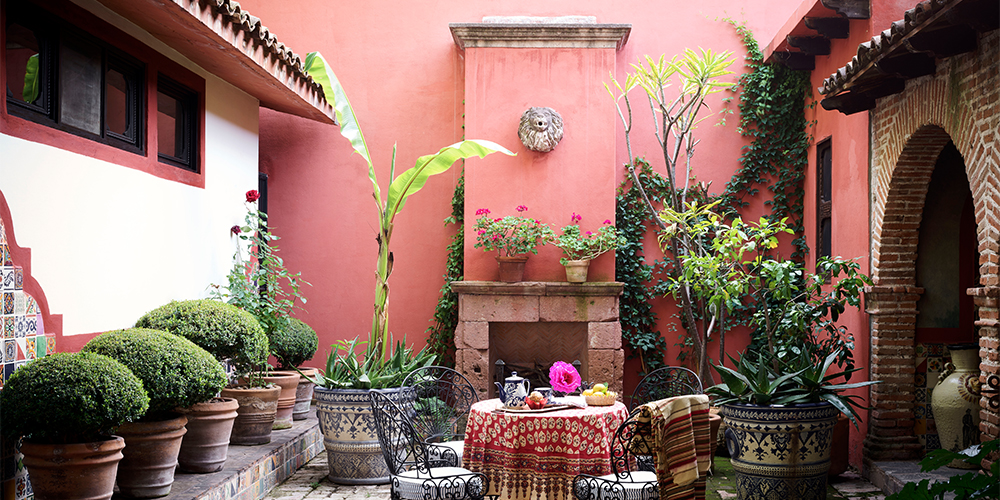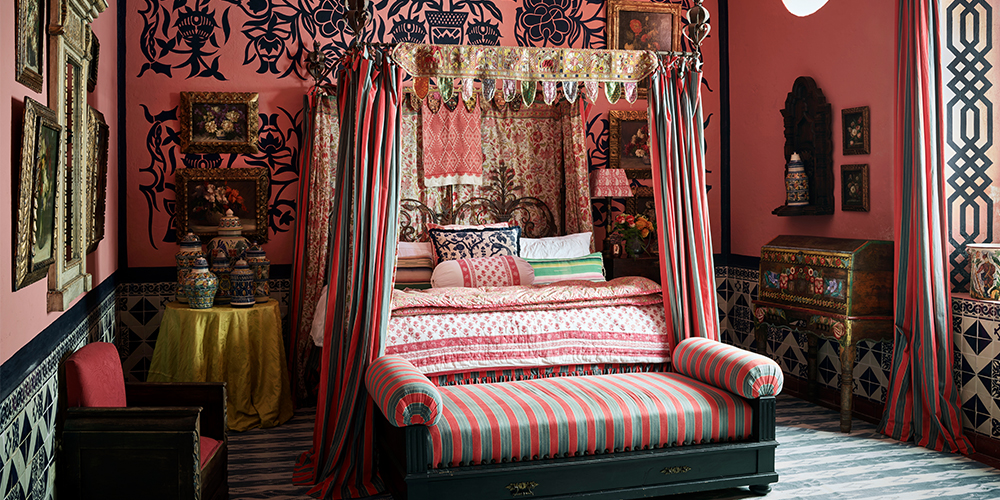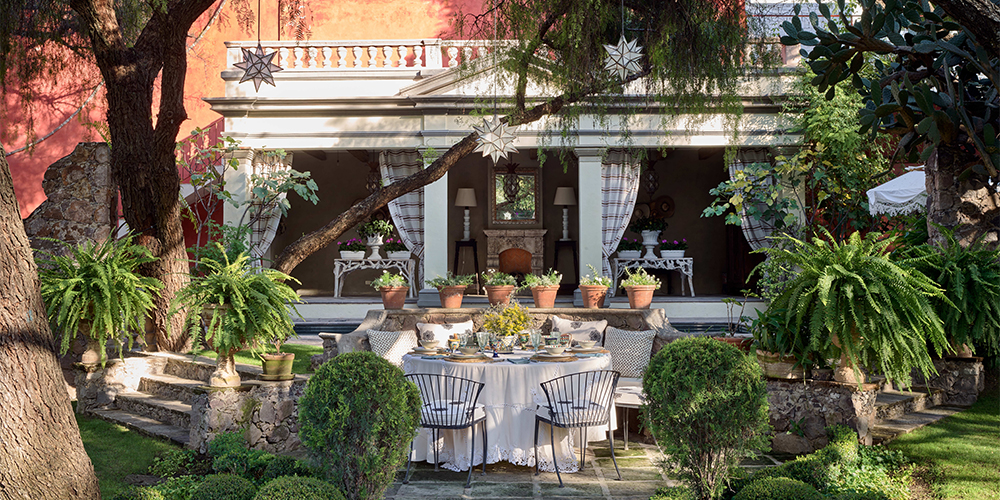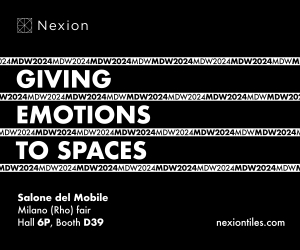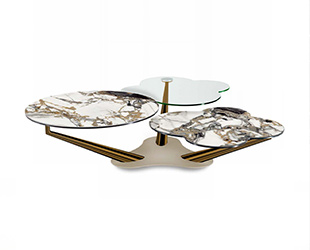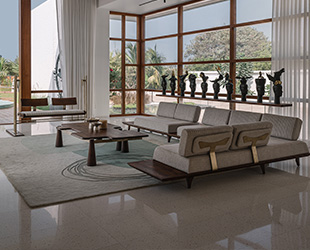Homes
Interior designer Michelle Nussbaumer showcases her charming home in Mexico
MAY 4, 2020 | By Aneesha Bhadri
Restored to suit modern day needs yet staying true to the Mexican-Spanish colonial architecture characteristic of San Miguel de Allende, interior designer Michelle Nussbaumer’s home in this Mexican city reflects her design sensibilities. Known for bold use of colour and an eclectic yet classic mix of striking patterns and influences from around the globe, the Dallas based creative employed custom made furnishings, vintage artefacts, indigenous materials and vibrant textiles to bring her home to life.
“When we bought it, most of the hacienda had been destroyed, but the stables and bodegas remained. I had to change all of the spaces to make it liveable. I didn’t change the size of the spaces but I refurbished it and added a few structures,” says Nussbaumer. “I wanted to keep an authentic version of a Mexican hacienda, adapted to the modern world.”
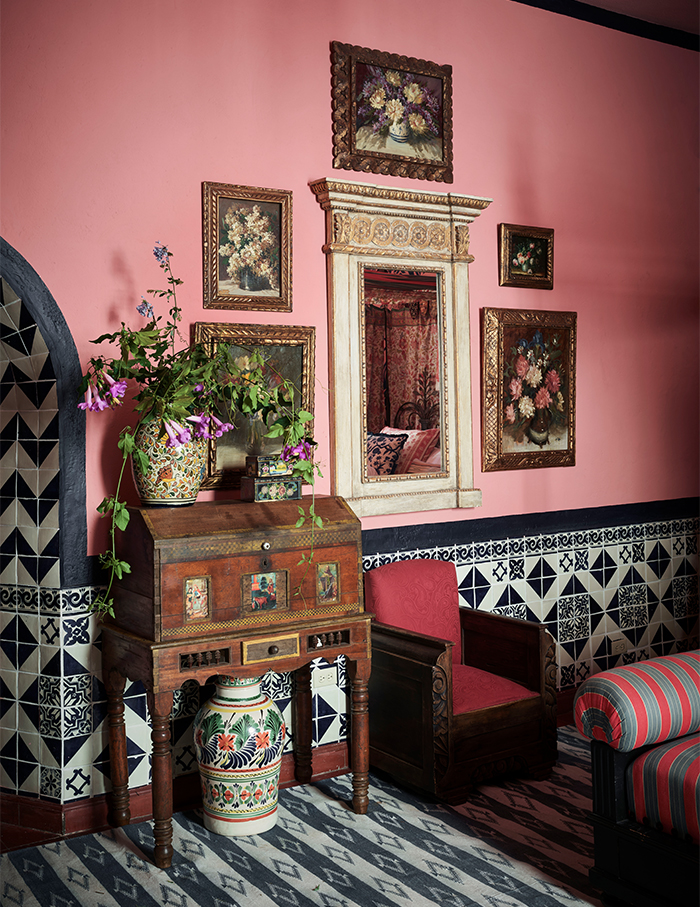

The house opens up in layers, with each belonging to a different century, unfolding like a fluid narrative from the pages of history. To the right of the foyer lies the guest bedroom, the 19th century part of the structure, while its left houses the family chapel and dates back to the 18th century. The main courtyard holds an outdoor sala and to its left is the library. Beyond that, a Moorish arch leads to the breakfast room. As you traverse under two more Moorish arches, you reach the kitchen. A long hallway leads to the dining and living areas. Originally granaries, these belong to the 16th century part of the abode. A trio of bedrooms opens onto the courtyard, from where you can access the gardens, pool, stables and outhouses beyond.

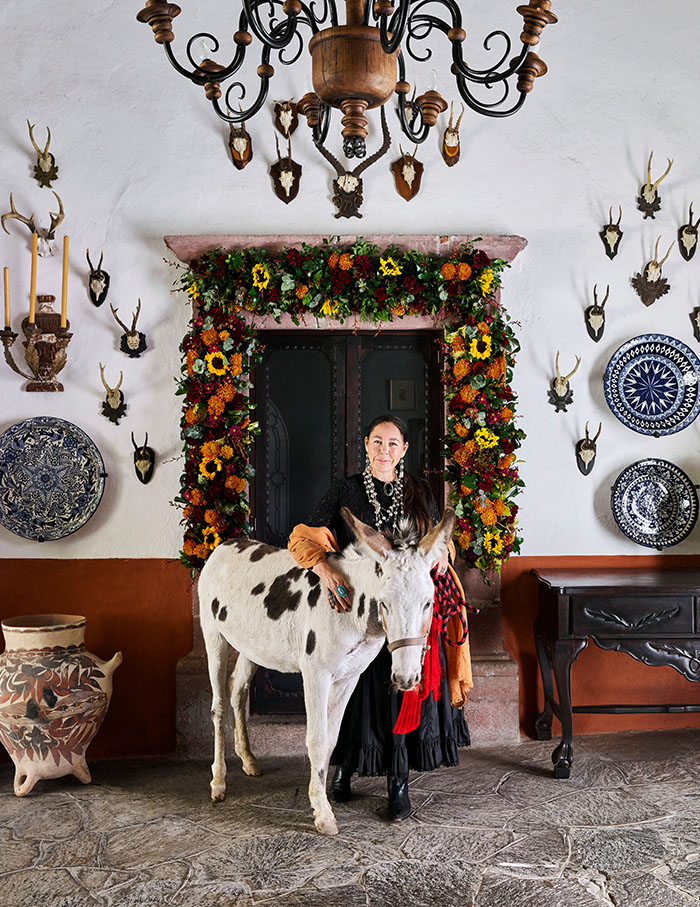
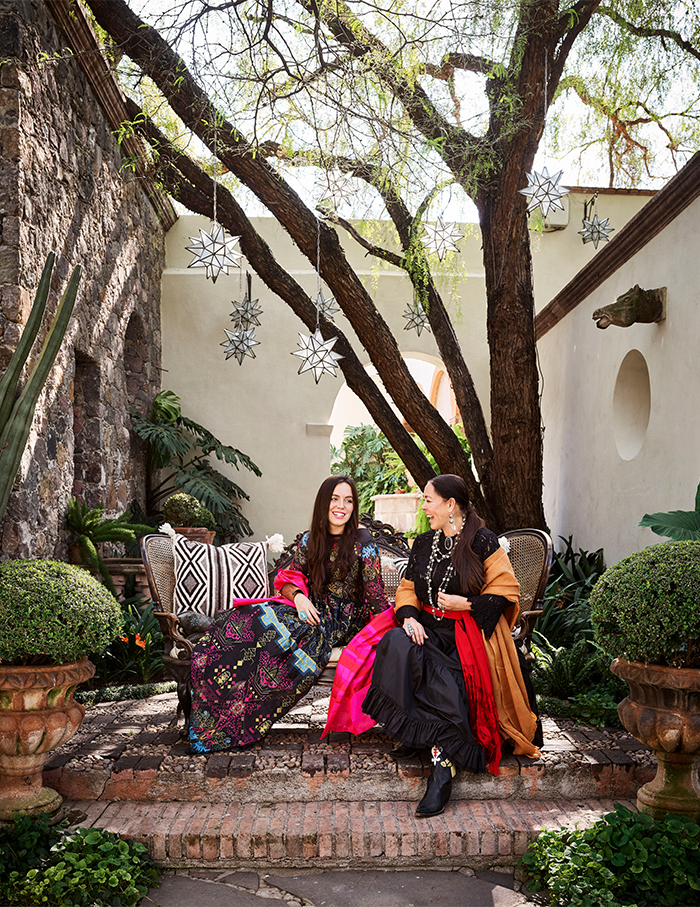
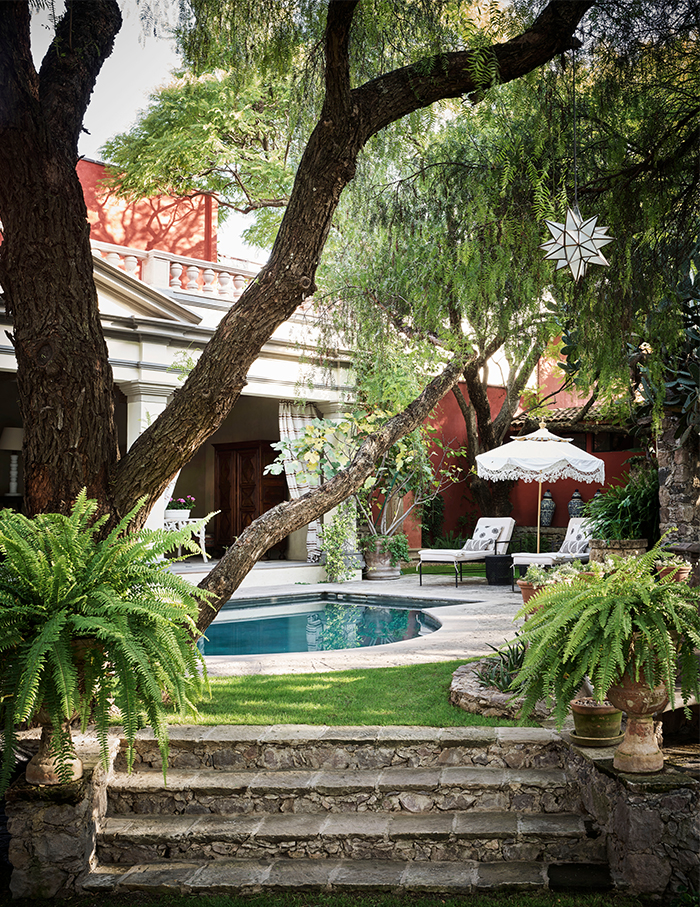
The garden and pool area predominantly feature furnishings from the interior designer’s brand called Ceylon Et Cie.“Many of the techniques used in Mexican haciendas are the same in India. San Miguel is very similar to India, especially Rajasthan, in climate. Such earthy, natural colours abound that it’s important to intersperse the neutral expanse with bright hues such as blue, red and pink.,” says Nussbaumer.
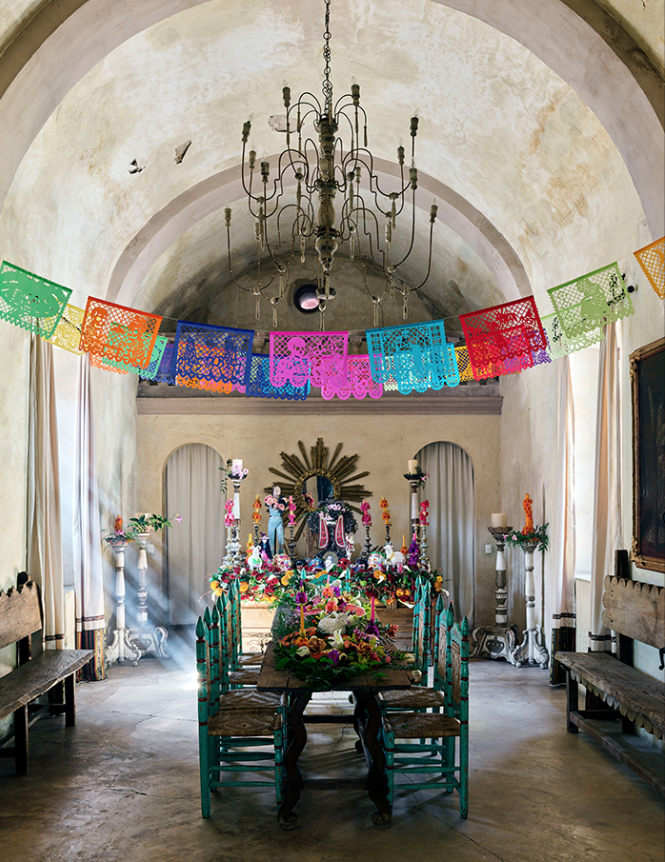
The material palette, like the vernacular architecture, is a rich, historical medley, with handmade talavera tiles, terracotta tiled roofs, original 18th century doors, salvaged beams from other hacienda demolitions, handmade plaster walls, 19th century accents and 17th and 18th century cantera fireplaces, to name a few.
The ceilings are made with a keystone in the bovedas. Baroque and Moorish arches punctuate the space, the entire flooring features original stone, whilst the renovated ceiling displays 17th and 18th century salvaged beams. “I also incorporated the Mudejar architecture, which is prominent in haciendas. When people come to my house they think it’s Moroccan, but actually it’s Hispanic as it came from Africa and the Moors to Spain, and then from Spain to Mexico,” smiles Nussbaumer.
